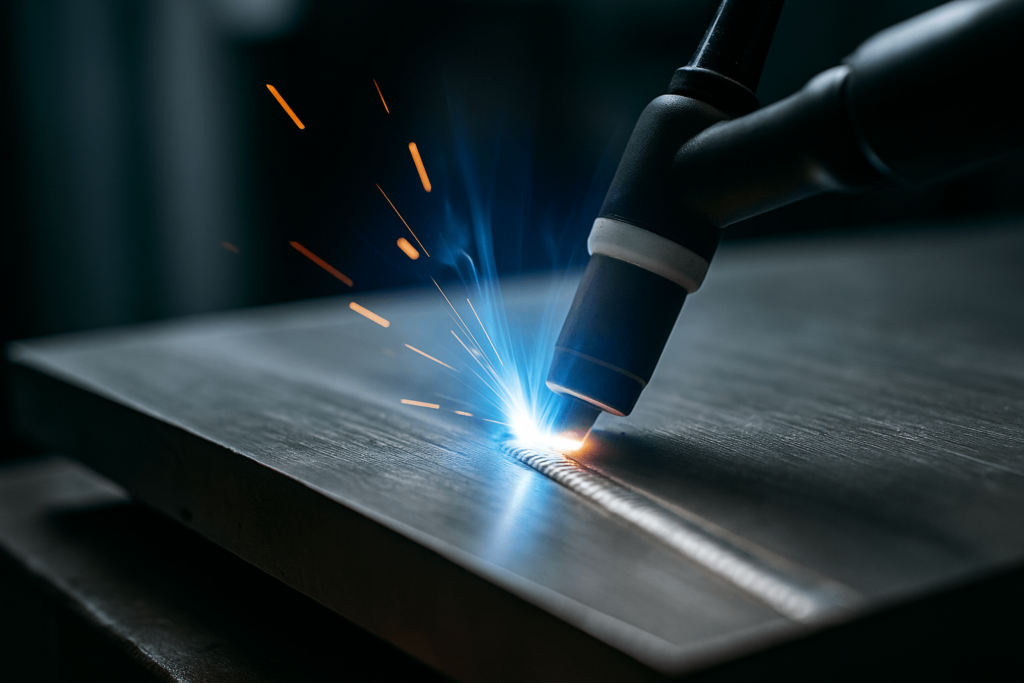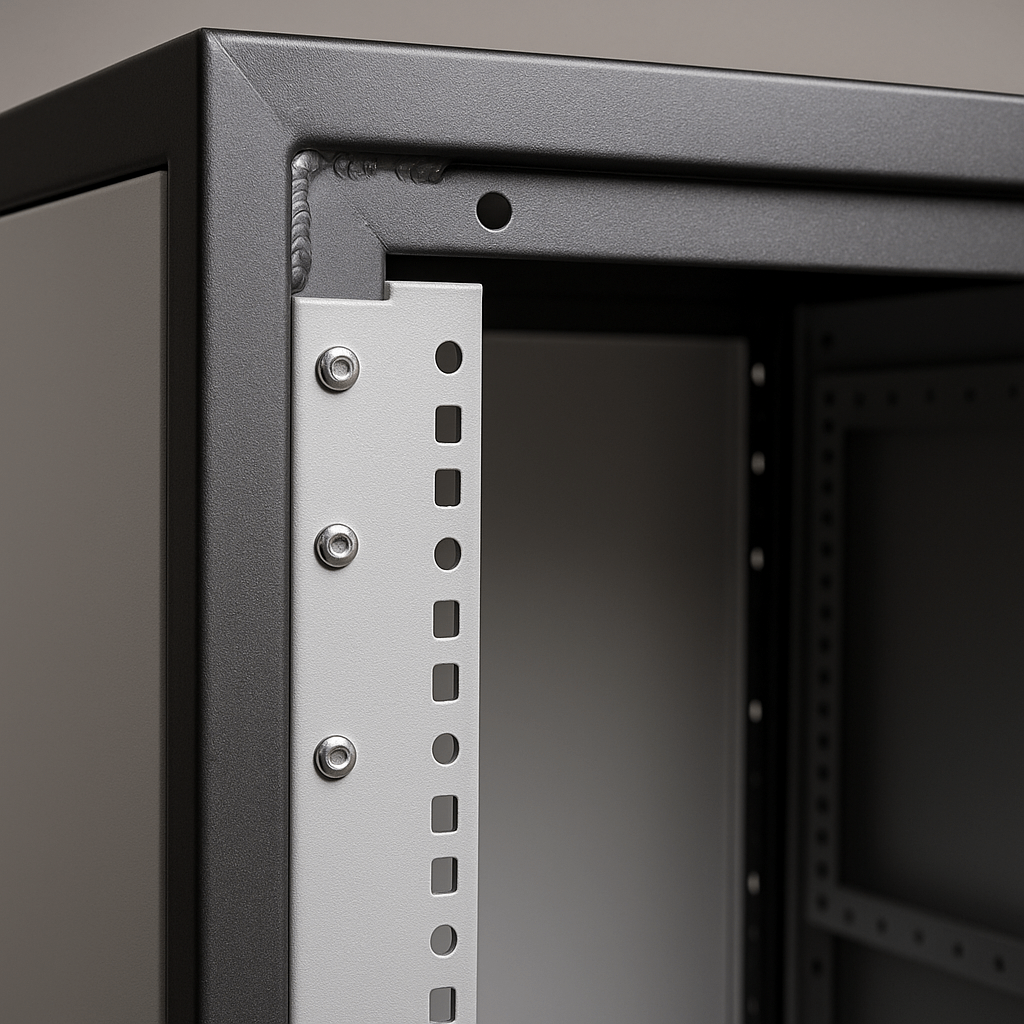Why Joining Method Selection Matters in B2B Sheet Metal Procurement
In custom sheet metal fabrication, joining methods directly impact long-term production efficiency, unit cost, and quality assurance. For OEM procurement teams sourcing internationally or managing multi-vendor strategies, the choice between welding and riveting shapes yield rates, warranty exposure, and field‑service cycles across the product lifecycle.
This guide delivers a strategic sheet metal joining process comparison tailored to B2B buyers. It aligns technical performance with practical procurement priorities such as labor availability, global scalability, lead‑time risk, and risk mitigation during product deployment.
Use this guide for sheet metal enclosure supplier evaluation and DFM for sheet metal joints when aligning engineering intent with sourcing realities, and to structure a custom sheet metal enclosure RFQ.
Understanding the Core Techniques
Welding: High-Strength Thermal Bonding
Welding fuses metal parts using heat, forming a permanent metallurgical joint. Common methods include:
TIG (Tungsten Inert Gas): Ideal for thin-gauge aluminum and stainless steel with precise, clean finishes.
MIG (Metal Inert Gas): Better for higher throughput on structural assemblies.
Spot Welding: Often automated for overlapping flange joints.
Welding delivers high-strength, sealed joints but requires certified operators and rigorous quality control. These factors impact cycle time, increase inspection complexity, and can cause variability across multiple production sites—especially when coatings or precision finishes are involved.
Riveting: Mechanical Fastening for Scalable Assembly
Riveting mechanically joins components through pre-drilled holes without heat. Key types include:
Blind Rivets: Installed from one side—suitable for closed or inaccessible assemblies.
Solid Rivets: Require two-sided access, typical in heavy-duty frameworks.
Riveting offers heat‑free joining, one‑side installation with blind types, and consistent clamp‑up; it also supports disassembly and stable first‑pass yield when procedures and tooling are standardized. For aluminum assemblies, applying aluminum sheet metal riveting best practices supports consistent pull strength and cosmetic quality.
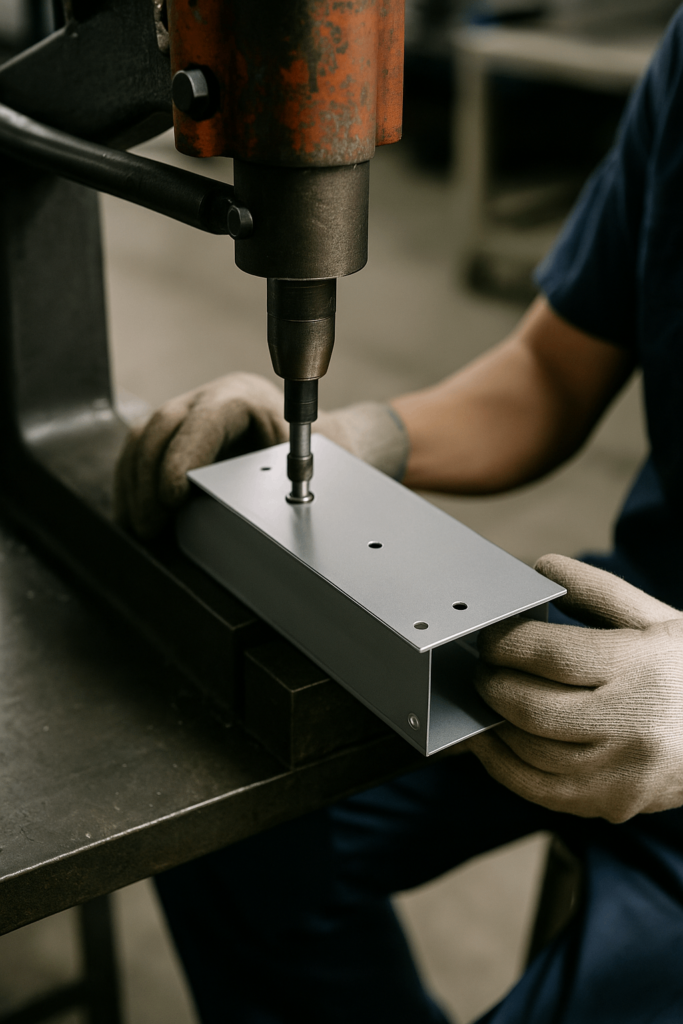
Application-Based Comparison: Choosing by Use Case
Protecting Coated and Branded Surfaces
Because no heat is involved, riveting protects powder-coated, anodized, or painted finishes. It’s commonly used in enclosures for kiosks, POS terminals, or branded display systems where exterior quality—color and gloss tolerance included—is non‑negotiable.
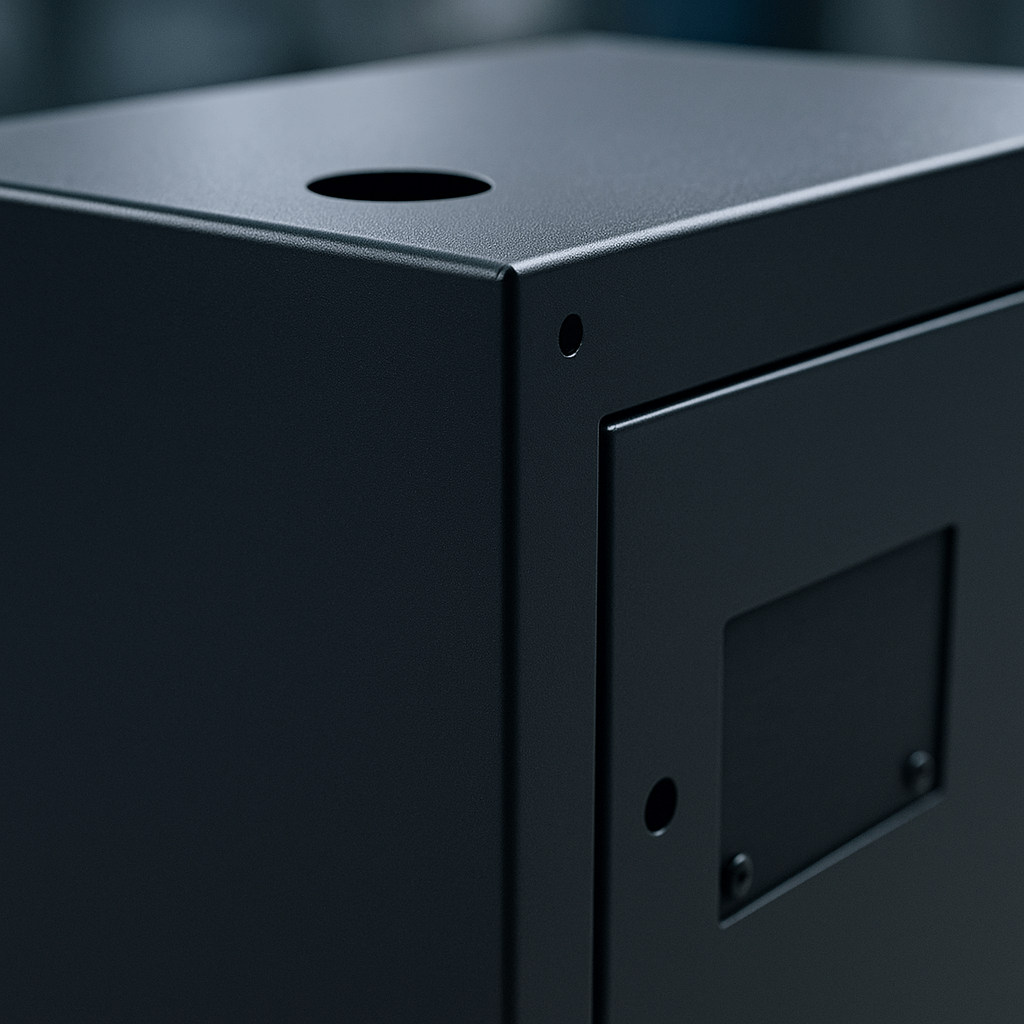
Structural Load and Sealing Requirements
Welding is preferred for load-bearing components, waterproof seams, and parts exposed to dynamic forces. Examples include industrial frames, energy cabinets, and load trays where seam performance impacts safety.
Understanding the difference between structural and cosmetic sheet metal joints helps guide design-to-cost strategies.
Maintenance and Modular Assembly Access
Modular assemblies often require access for diagnostics or updates. Hybrid builds—welded internal supports and riveted access panels—support this need while maintaining performance.
Buyer Insight: When designing for long-term serviceability and scalable replacements, hybrid joining offers a pragmatic solution.
Speed, Labor, and Supply Chain Integration
Fabrication Time and Metal Fabrication Joint Cost Analysis
Riveting is fast, repeatable, and less dependent on operator expertise. In mixed-lot or rapid-response production, it often delivers a better cost-to-output ratio and shorter riveted vs welded assembly lead time. For quoting, request a welding vs riveting cost per joint comparison that includes labor minutes, changeover time, and inspection steps.
Workforce Readiness and QA Risk
Riveting simplifies vendor qualification, especially across multiple production facilities. Welding requires certified labor and consistent QA processes.
Procurement Tip: Selecting fastening method for OEM fabrication depends on balancing labor scalability, quality control load, and region-specific production readiness.
Consistency Across Global Facilities
Riveting standardizes outcomes, even in offshore or low-volume setups. Welding results can vary significantly without centralized QA oversight.
Sourcing Tip: To maintain global output consistency, choose joining methods with low variance across vendor ecosystems.
Operational checklist (non‑exhaustive):
Process qualification: Align and document WPS/PQR (or equivalent) for welding and standardized SOPs for rivet installation; control revisions.
Fixtures & datums: Define locator pins, clamp scheme, and datum references; verify fixture condition at start of shift and after changeovers.
Equipment calibration: Maintain logs for weld power sources/spot‑weld controllers and torque/setting tools used for fasteners.
Consumables control: Track filler/wire lots and rivet batches; specify storage and shelf‑life handling.
Sampling & inspection plan: Set an AQL/ISO‑2859 sampling plan with visual + mechanical criteria; include destructive weld coupons and periodic rivet pull tests.
First Article & ongoing control: Require FAI for new/revised joints and CP/PPAP‑style controls for critical characteristics where applicable.
Traceability & visuals: Use weld maps/joint IDs on drawings and photo standards for cosmetic joints to align expectations across plants.
Standards reference: During process qualification reference applicable frameworks (e.g., ISO 3834 for welding quality requirements, AWS D1.1 for structural steel, ISO 14555 for resistance welding) to harmonize terminology and expectations across vendors.
RFQ & Vendor Qualification Data Checklist (Joining Capabilities)
Use this checklist during sheet metal enclosure supplier evaluation to standardize expectations and reduce ambiguity.
Joint catalogue: TIG / MIG / spot / blind & solid rivets; note difference between structural and cosmetic sheet metal joints.
Surface plan: Coating before/after join; masking needs; allowable touch‑up methods.
DFM targets: Minimum flange width, edge distances, max rivet pitch; tolerance stack‑up at datum features.
Performance tests: Pull tests for rivets, destructive weld coupons, vibration/thermal cycles if applicable.
Inspection plan: AQL/ISO‑2859 levels, torque/peel checks, leak tests for sealed enclosures.
FPY & rework: Target first‑pass yield, DPPM, and allowable rework %; NCR/8D close‑out expectations.
Documentation set: Drawings with weld symbols/joint IDs, fixture drawings, cosmetic standards, and PPAP/FAI where required.
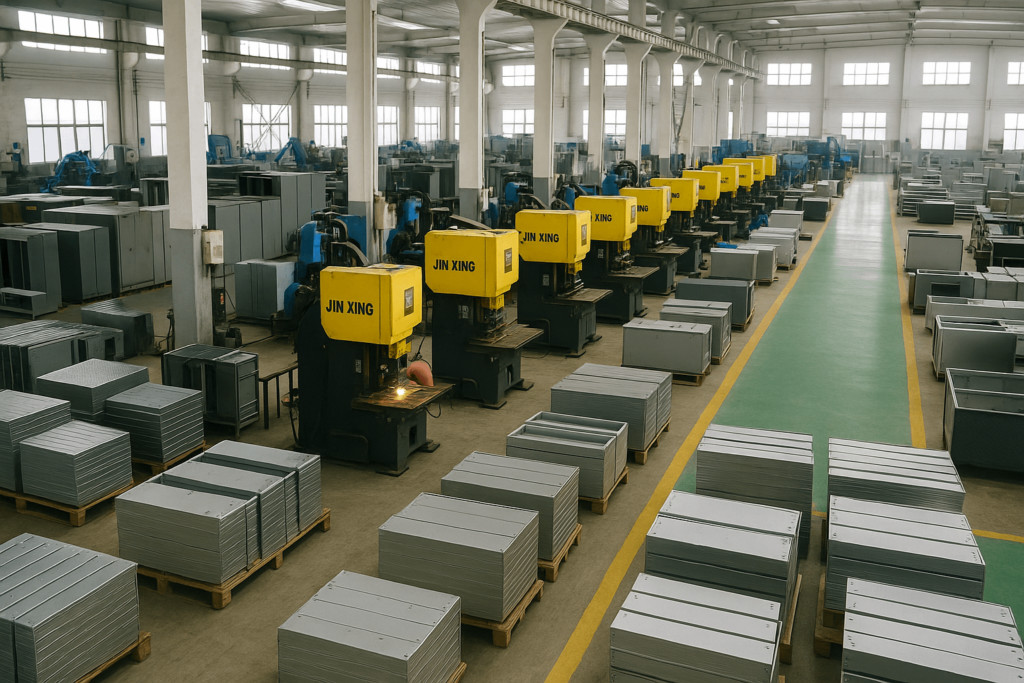
Side-by-Side Snapshot: Welding vs. Riveting
| Criteria | Welding | Riveting |
|---|---|---|
| Structural Strength | Very High | Moderate to High |
| Impact on Finish | May damage surface | No thermal impact |
| Rework & Maintenance | Complex | Easier |
| Assembly Time | Slower | Faster |
| Skill Level Required | Certified operators | General labor |
| Global Vendor Consistency | Medium to Low | High |
| Lifecycle Cost | Higher (QA + repair risk) | Lower (repeatable + modular) |
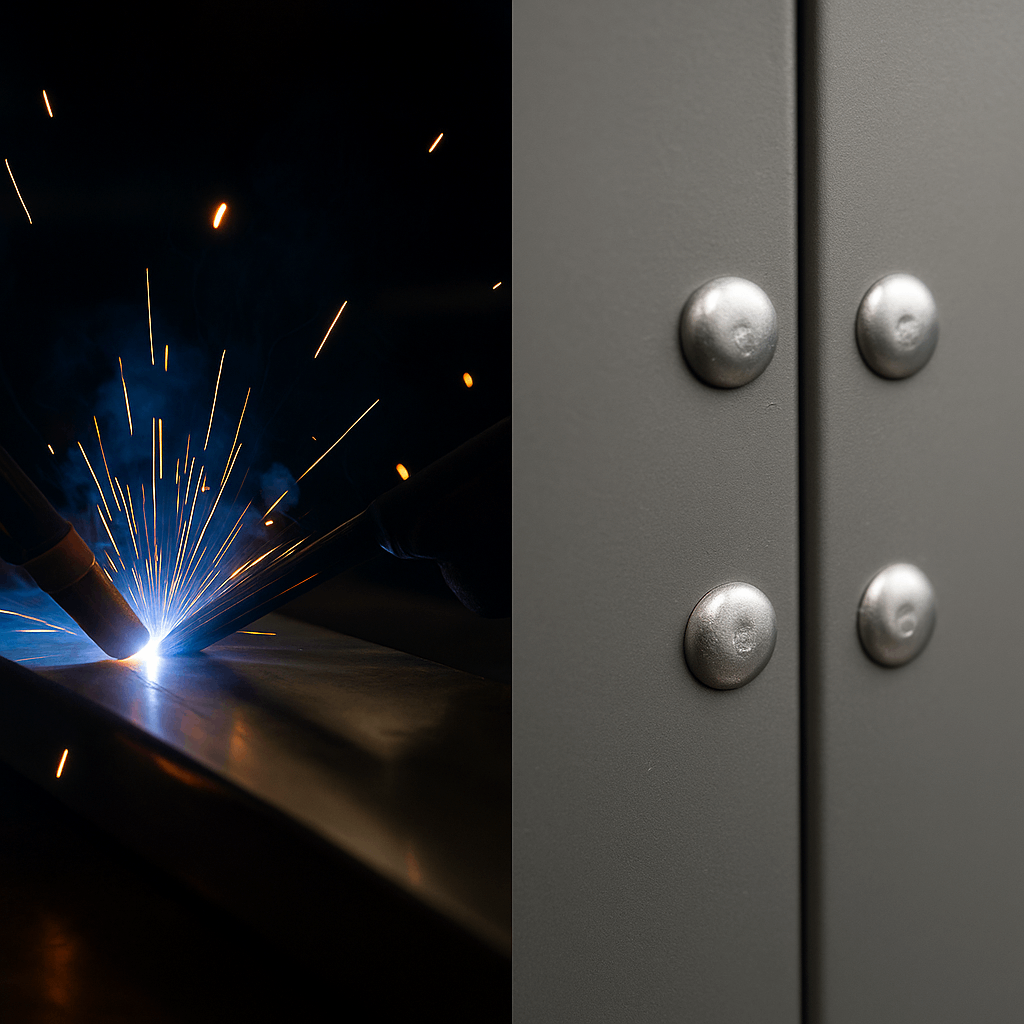
Hybrid Use Cases: Optimizing Across Product Lifecycle
Many OEMs apply a hybrid joining strategy:
Welded frames provide strength where joints are critical
Riveted covers or mounting brackets allow for easier part servicing or upgrades
This configuration aligns well with design-for-assembly and design-for-serviceability philosophies, especially in multi-SKU product ecosystems.
Design Tip: Use hybrid joining to control costs, reduce service disruptions, and accommodate evolving field conditions.
Engineering Resource: Fastener Selection Guide for Precision Enclosures
Incorrect hardware hole sizing can derail builds. Referencing a fastener selection guide ensures accuracy and speeds up DFM (Design for Manufacturing) handoff.
| Component Type | Sheet Thickness | Recommended Hole (mm) |
| M3 Blind Rivet | 0.8–1.5 mm | 3.2 mm |
| M4 Press Stud | 1.2–2.0 mm | 4.3 mm |
| M5 PEM Nut | 1.0–2.5 mm | 7.0 mm |
Access YISHANG’s full hardware tolerance chart to reduce rework and ensure tooling compatibility.
Final Thoughts: Making the Right Joining Call
If you’re sourcing sheet metal enclosures for global markets, the joining method directly influences production consistency, unit cost, field failure rates, and maintenance cycles—not just the initial build.
Here’s how OEM buyers can evaluate the right joining method for their design. For sheet metal design optimization for global sourcing, align joint selection with KPI targets (FPY, DPPM, RTY, field‑failure rate) and an explicit service strategy.
Tie joint type to field performance expectations
Align method with vendor workforce capabilities
Map joining cost against volume and product refresh cycles
Use joint configuration to control aftermarket service needs. Work with an OEM sheet metal fabrication supplier capable of qualifying both welded and riveted joints under a unified PPAP/FAI framework.
YISHANG helps B2B buyers convert engineering specifications into practical sourcing decisions. Our technical support bridges fabrication realities with global sourcing requirements.
FAQ
Welding offers stronger joints but increases inspection and maintenance complexity. Rivets are easier to replace but must be chosen based on load and material type.
Welding outcomes vary by operator skill, training, and equipment. Riveting delivers more uniformity across suppliers.
Structural load, serviceability, finish preservation, and labor cost are critical. Always tie joint type to function.
Yes. It supports fast testing and modular tweaking. Final products can adopt welding where strength is required.
They shape vendor selection, tooling needs, quality audits, and even warranty exposure. Choose wisely to reduce rejection costs.
Ask suppliers to itemize labor time per joint, expected rework rates, post‑finish touch‑up risk, fastener BOM cost, and QA steps. Compare these with projected volumes to run a metal fabrication joint cost analysis that reflects your actual conditions.

